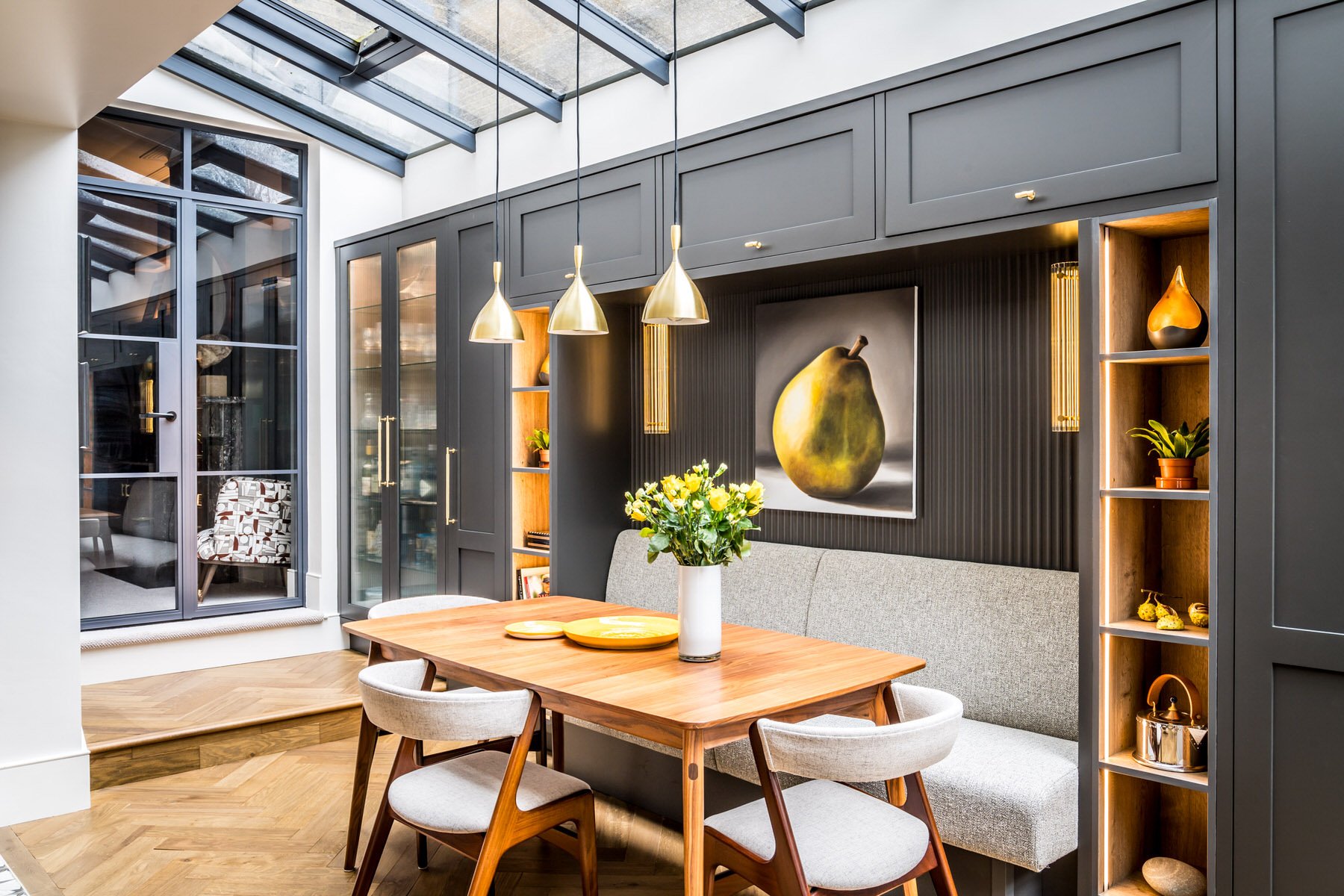
DESIGN, Decoration & Renovation
Creating INDIVIDUAL INTERIORS & GARDENS

From hourly consultations and individual room design to complete home & garden renovation and project implementation. We offer a fully flexible service to meet your requirements. UK & International clients.
How we can help
Services tailored to fit you perfectly


Projects
-
![bay-window-bench-seat-teal-blue-white-shutters]()
Town House, Highbury
-
![garden-room-sunny-warm-pink-velvet-sofa-outdoor-seating]()
Garden Room, Essex
-
![open-plan-living-dining-garden-light-modern-victorian]()
Victorian Modern Wimbledon
-
![white-light-neutral-colours-kitchen-dining-breakfast-bar-garden-doors]()
House & Mews, Surrey
-
![light-modern-kitchen-design-edwardian-dark-grey-cabinets]()
Edwardian Property, Chiswick
-
![rustic-french-farmhouse-living-dining-light-walls-greenery]()
French Farmhouse, Provence
-
![georgian-entrance-hallway-front-door-classic-geometric-floor-garden]()
Georgian Country Home, Kent
-
![staircase-runner-light-cream-black-framed-windows-wood-panelling-natural]()
Modern Renovation, Twickenham
-
![loft-bedroom-floral-botanical-wallpaper-teal-blue-bed-linen]()
Loft Conversion, 1930's Home
-
![bright-light-open-plan-kitchen-dining-garden-view]()
Interior & Garden, Sussex
-
![blue-white-bathroom-brass-taps-mirrors-silver-scallop-tiles]()
Interior Design, Barnes
-
![country-cottage-design-linen-upholstered-armchairs-farmhouse-door]()
Cottage Renovation, Cotswolds
-
![apartment-living-room-snug-city-view-mid-century-neutral-colours]()
Riverside Apartment, Bermondsey
-
![luxury-stand-alone-bath-bathroom-grey-tones-brass-taps]()
Tadelakt Bathroom, South West London
-
![yoga-studio-neutral-colour-tones-natural-textures-calm-peaceful]()
Goji Yoga Studio, Interior Design
-
![living-room-bay-window-classic-modern-traditional-interior-design]()
Interior Decoration, Brook Green
-
![green-teal-blue-kitchen-dining-room-country-classic-design]()
Country Home, Buckinghamshire
-
![Calm-cosy-snug-window-seat-pale-blue-beige-linen-cushions]()
Calm & Cosy, Wimbledon
-
![open-plan-large-kitchen-dining-room-teal-blue-parquet-floor-garden]()
Interior Design, Wimbledon Village
-
![blue-open-plan-large-kitchen-dining-room-parquet-floor-garden-view]()
1930's Kitchen Renovation
-
![geometric-red-pink-zig-zag-pattern-upholstery-armchairs-pair-window]()
Country House, Essex
-
![house-boat-design-river-water-home-design]()
Houseboat Refurbishment
-
![living-home-bar-design-warm-glamorous-luxury-deco-stools-wooden-floor]()
Home Bar Design, London
-
![scandi-bedroom-design-white-teal-pendant-bedside-lights]()
Scandi Style, Interior Design
-
![teal-blue-mustard-yellow-living-large-room-light-spacious]()
New Build Home, Tonbridge
-
![royal-blue-grade-2-listed-duck-egg-walls-grandfather-clock-fireplace-mirror]()
Grade II Listed Renovation






























